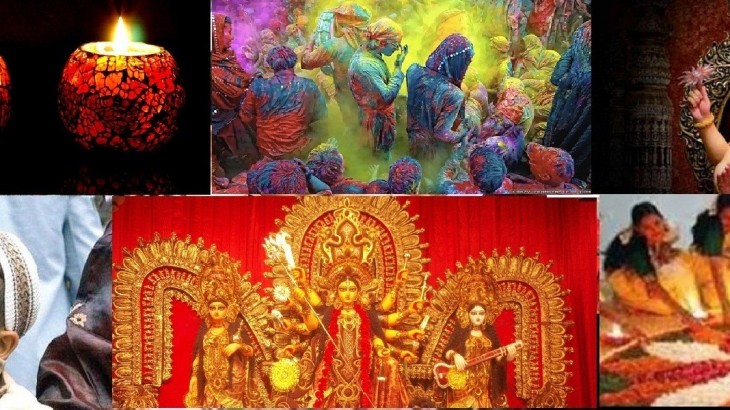India, the land of varied cultures and religions, is endowed with large number of festivals celebrated all over the country. Every religion has their own set of festivals that exhibits the real spirit that the entire nation shares. Every year number of tourists flock to India to have a glance of the festivals that are celebrated with immense pomp and show.
There is a festival for every reason in India. The most common reasons are to celebrate the harvest season, commemorate the victories of gods and goddesses, commemorate historical events, and to express devotion to particular gods and goddesses. The festivals that are held throughout the year offer a unique way of seeing Indian culture at its best. Most pilgrimage sites in India host grand celebrations on major Indian festivals.
Trawell.in presents a quick list of the most famous festivals of India.
Diwali
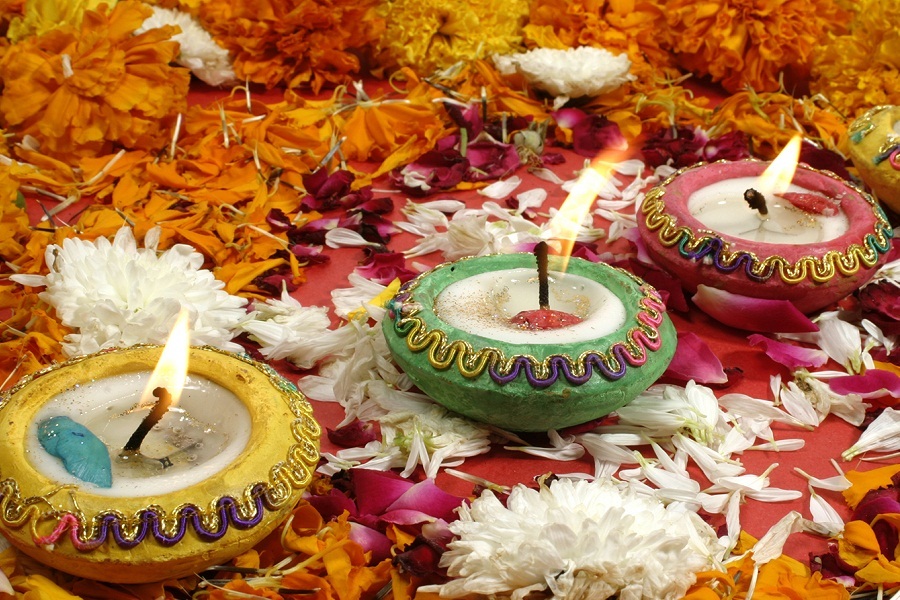
Diwali, famously known as the festival of lights, is one of the most popular festivals of India. It is celebrated by people of all religions with full enthusiasm and fervor. Diwali is usually celebrated in October or November every year and is a five day Hindu festival. In North India, Diwali is celebrated to commemorate the return of Lord Rama to Ayodhya after defeating Ravana. In South India it is a celebration of the victory of Lord Krishna over the demon Narakasura.
On this day people decorate their houses with candles, earthen lamps or with electric bulbs. Goddess Lakshmi, the deity of wealth, is thanked on this day and everyone prays for a good year ahead. People wear new clothes and exchange sweets and gifts among themselves. People visit temples and Gurudwaras to offer their prayers to the almighty. The sky is lit with colorful fire crackers on this day.
Holi
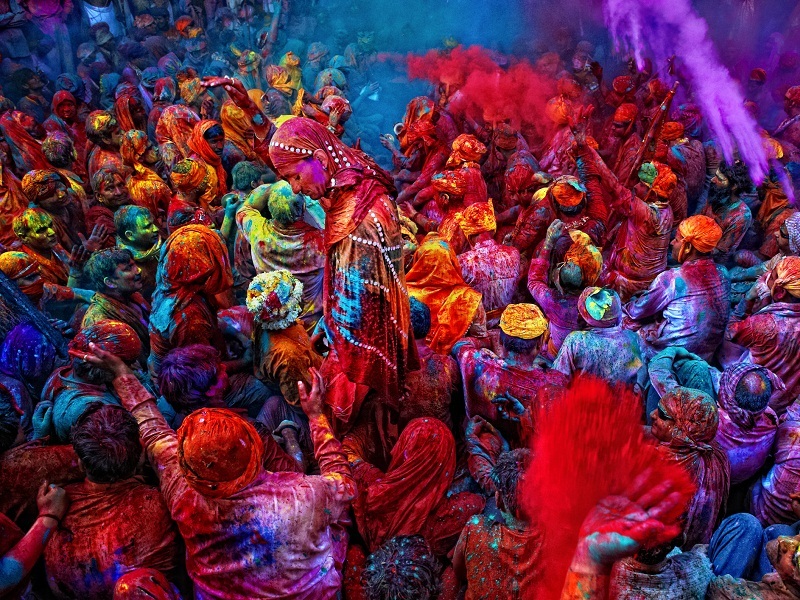
Holi is an ancient and popular Hindu religious festival celebrated throughout India. It is a spring festival, also known as the festival of colours. The colorful festival of Holi is celebrated on Phalgun Purnima which occurs around the month of March. It is the second most widely celebrated festival of India after Diwali. Holi festival has an ancient origin and celebrates the victory of good over bad. According to the legend, the festival celebrates the killing Holika, the sister of Hrinyakashyapu.
On the eve of Holi, people make huge Holika bonfires and sing and dance around it. On the day of Holi, people gather in open areas and apply dry and wet colors of multiple hues to each other. Mathura, Vrindavan, Barsana, Jaipur, Goa, Anandpur Sahib, Shantiniketan, Hampi and Mumbai are the best places to celebrate Holi in India. The Holi of Mathura and Vrindavan is extremely famous throughout the country. It attracts tourists and pilgrims from all over the world.
Ganesh Chaturthi
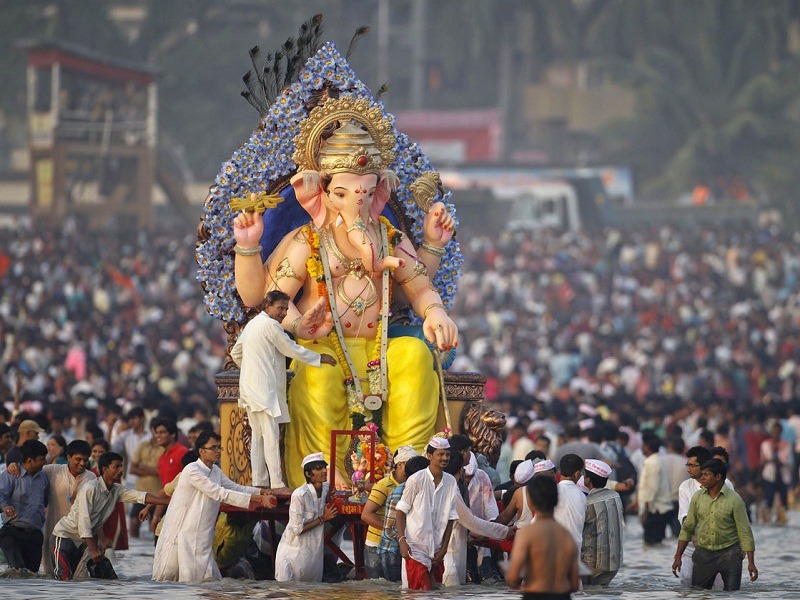
Ganesh Chaturthi, also known as Vinayaka Chaturthi or Vinayaka Chavithi, is one of the popular Hindu festivals celebrated in India in honour of the elephant-headed god Ganesha. It falls on the fourth day of the Hindu month Bhadrapada, usually in August or September. The festival generally lasts 10 days, ending on the fourteenth day of the fortnight (Anant Chaturdashi).
Ganesh Chaturthi festival is celebrated throughout India with great devotion. The festival is celebrated by families at home, by people at their places of work and in public. The public celebration involves installing clay images of Ganesha in public pandals and group worship. The seven to ten days long festival ends with the ‘Ganesh Visarjan’ where the idols are immersed in the water; it is done as a procession with millions of people accompanying the idol along with music and dance. Mumbai, Pune, Hyderabad, Goa, Ganpatipule and Kanipakam are some great places to celebrate Ganesh Chaturthi.
Dussehra / Durga Puja / Navratri

Dussehra or Vijayadashami is a major festival celebrated across India. It is celebrated as the victory of Lord Rama over Ravana and also the triumph of Goddess Durga over a demon called Mahishasur. The Navratri festival begins on the first day of the bright half of Ashvin or Ashwayuja as per traditional Hindu calendar. During Sharad Navratri, the tenth day is celebrated as Dussehra or Vijayadashami. The entire ten day period is marked with much fasting, feasting, singing and dancing. Dussehra also marks the unofficial end of the summer season and the onset of the winter season.
Navratri celebration and worshiping styles are different from each state. In Delhi it is known as Ramlila, in West Bengal it is known as Durga Puja, in Mysore it is Dussehra, in Gujarat the festival is known as Navratri. The Garba of Gujarat and Durga Puja of West Bengal are highlights of Navratri festival in India. During these ten days, Goddess Durga is worshipped for Navratri (nine nights), and on the tenth day, Goddess Saraswati is worshipped. On the tenth day the effigies of Ravana, Kumbhkaran and Meghnad are burnt with crackers to glorify the victory of good over evil. Mysore, Kullu, Varanasi, Kolkata, Ahmedabad, Delhi, Bastar, Vijayawada and Kota are the popular places to celebrate Dussehra in India.
Krishnashtami
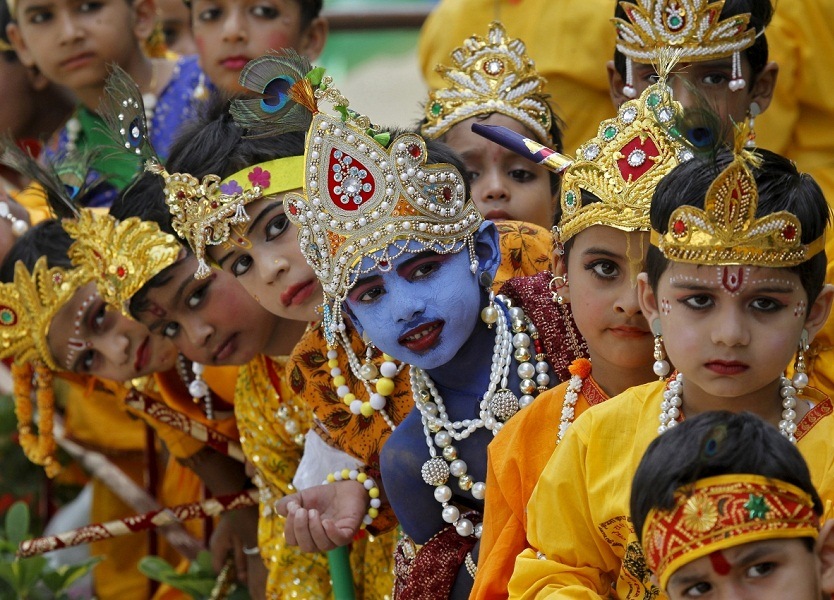
Krishna Janmashtami also known as Krishnashtami, Gokulashtami, Srikrishna Jayanti, Janmashtami, Ashtami Rohini or Saatam Aatham is an annual celebration of the birthday of the Hindu deity Krishna, the eighth avatar of Lord Vishnu. The festival is celebrated on the eighth day (Ashtami) of the Krishna Paksha (dark fortnight) of the month of Bhadrapada (August–September) in the Hindu calendar. Krishna Janmashtami is one of the important festivals of India, which is celebrated with great fervor.
The magical festival is celebrated in numerous ways in different parts of India. Young kids are dressed up as Krishna and Radha is also a specialty of the day. As a child Sri Krishna was very naughty and he was very fond of butter. In states like Maharashtra people enact incidents from Krishna’s childhood by placing an earthen pot high above the ground and then forming a human pyramid to try and break it. Many youngsters participate in this activity with great enthusiasm. This ritual of breaking the pot is known as Dahi Handi. The crowds at Dahi Handi, street performances of singing and dancing and night celebrations in the temples are the most exciting activities to be explored during the festival. Mathura, Vrindavan, Dwarka, Udipi, Guruvayur and ISKCON temples are the popular places to visit for Janmashtami celebrations.
Hemis Festival
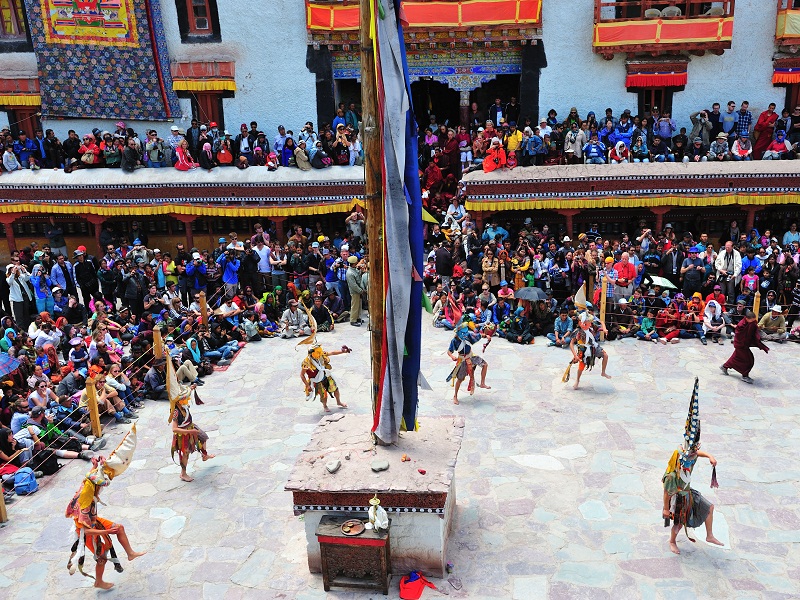
Hemis Festival, one of the most famous Buddhist festivals in the world, is held at Hemis Gompa in Ladakh every year. The day has been declared as the state holiday. This 2-day festival is celebrated on the 10th day of the Tibetan lunar month and remembered as the birth of Padmasambhava, the founder of Tibetan Buddhism. The spiritual leader Guru Rinpoche, also known as Lord Padmasambhava, is believed to have fought with demons for the safety of the local people. Over 80,000 people, including locals and visitors from India and overseas, visit Ladakh for the celebrations.
During the festival, the locals get dressed-up in traditional clothes, where men wear cummerbunds and women wear vibrant headgears and loads of jewellery. The Lamas perform sacred masked dance, known as Chaam while they are accompanied by musical drums, long horns and cymbals. The masked dance represents the victory of good over evil. Chaams performance is a fundamental a part of Tantric tradition. Chaams are performed only in the monasteries that practice Vajrayana teachings of Tantric Buddhism. The festival takes an auspicious turn every 12 years in the Tibetan Year of the Monkey, when the two-storey high ‘Thanka’ depicting Padmasambhava is displayed.
Christmas
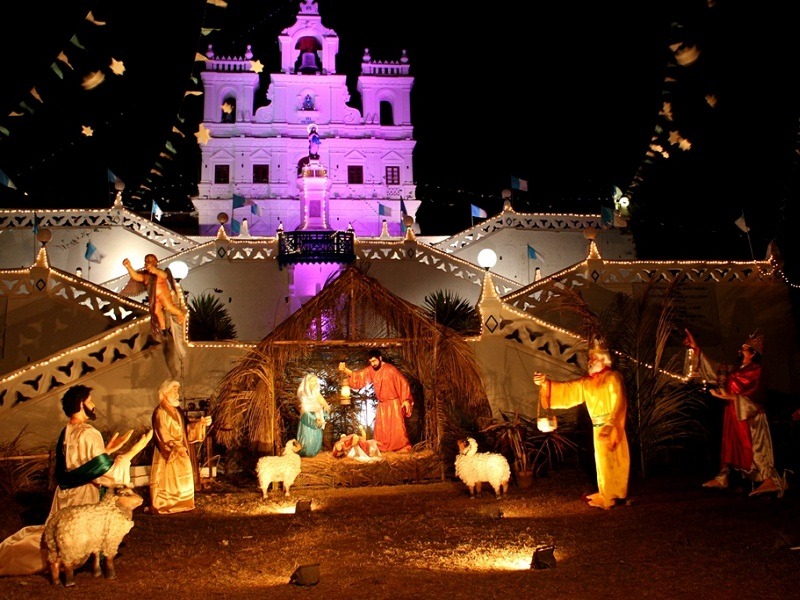
Christmas is one of the biggest festivals in the world and also one of the popular festivals of India. It is observed by the Christians in India and now days Hindu-Muslim also takes part in the festival. Christmas is celebrated annually on 25th December to mark the birth of Jesus Christ. It is celebrated with great joy and enthusiasm.
This festival is celebrated worldwide with an unmatched fervor and zeal. Decoration is an integral part of Christmas Celebrations. From homes to schools and streets to shopping complexes, are all decorated with beautiful ornaments, lights, and pretty Christmas Trees. The sending and exchange of Christmas greetings, observance of fasting and special religious observances such as a midnight Mass on Christmas Eve, the burning of a Yule log, and giving and receiving of presents are the main activities on this occasion. The best places to celebrate Christmas in India are Goa, Pondicherry, Kolkata and Kerala.
Ramzan / Eid-Ul-Fitr
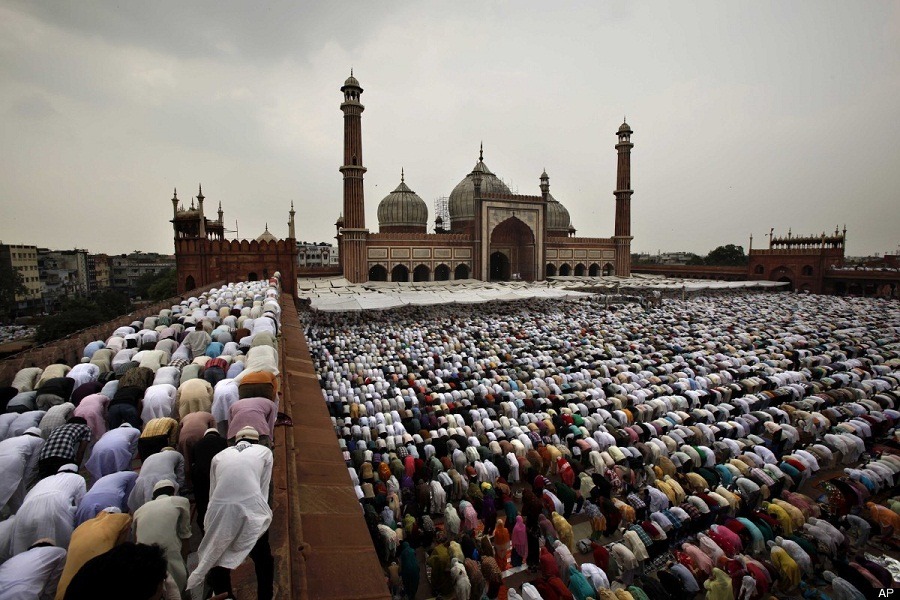
Eid-Ul-Fitr is a famous Muslim festival and is also one of the most celebrated festivals of India. It is popularly known as the ‘Festival of Breaking of the Fast’, and is celebrated as soon as the new moon is seen at the end of the month of fasting, namely Ramadan. The celebration date of Ramadan is not fixed because Muslims believe in the moon calendar. Muslims believe Ramadan to be an auspicious month as it is believed to be the month in which the first verses of the Quran were revealed to the Islamic prophet, Muhammad.
Eid celebrates the conclusion of the 29 or 30 days of dawn-to-sunset fasting during the entire month of Ramadan. People dress up in fineries, attend a special community prayer in the morning, visit friends, and relatives and exchange sweets. Many mouthwatering delicacies are prepared to be served to the guests and family members. Children are given ‘Idi’ in the form of cash or gifts by the elders. Delhi, Jammu & Kashmir, Uttar Pradesh, Bihar, Maharashtra, Kerala, West Bengal, Karnataka and Hyderabad are the popular places to celebrate Eid in India.
Raksha Bandhan
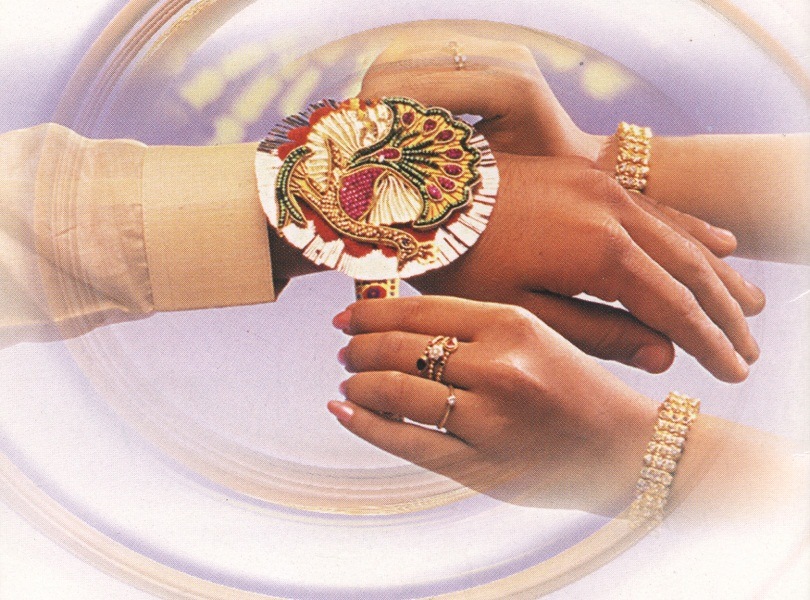
Raksha Bandhan is a festival which celebrates the relationship between brothers and sisters. The name ‘Raksha Bandhan’ refers to ‘a bond of protection’. One of the famous festivals of India, Rakhi is basically a Hindu festival, though today people from different religions participate as well. It is celebrated on Purnima or full moon day in the month of Shravan which falls in August- September. It is a simple festival which involves a lot of love and affection.
During Rakhi, the sister performs Aarti (prayer), applies tilak, and ties rakhi (a sacred thread) on the wrist of her brother. She prays to the almighty for the well-being and good health of her brother. The brother in return offers a gift to his sister and pledge to look after her. This festival strengthens the bond of love between brothers and sisters. The festival is further relished with sweets and delicious food. Another festival which has strong similarity to Rakhi is Bhaidooj which comes just after Diwali.
Pongal / Makar Sankranti
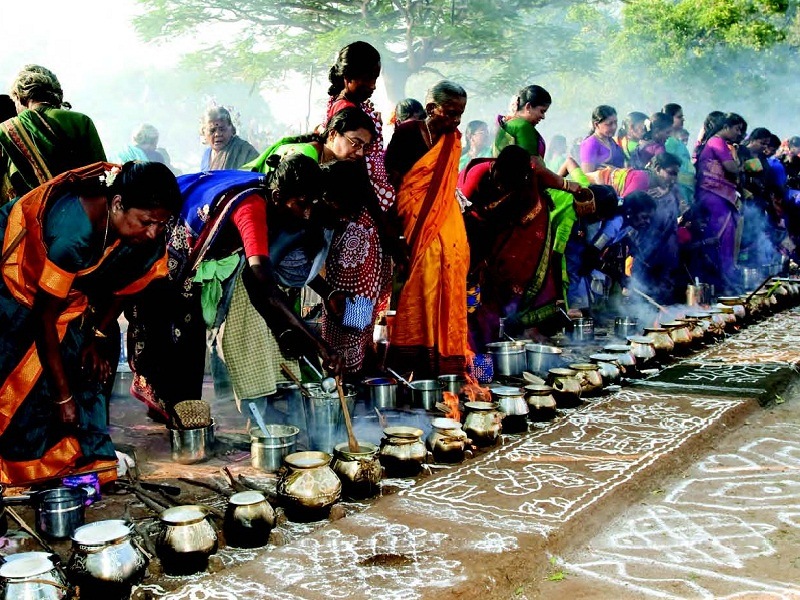
Pongal or Sankranti, the four day long harvest festival of South India, is one of the most famous festivals of India. This festival is equivalent to the Makar Sankranti celebrated in North India. The festival is celebrated in the month of January, and typically on 13 – 16th every year. Bhogi, Makar Sankranti, Kanuma and Mukkanuma are the four days of Pongal festivities on successive days. The festival is celebrated to commemorate the ascending of the Sun God into the northern hemisphere.
Pongal is a colorful and traditional festival with many ceremonies devoted to various deities. The houses are cleaned, and all maintenance jobs are done before this festival. During the four day festival, different varieties of Rangoli are drawn in front of the houses early in the morning. Bhogi festival is the first day and is devoted in honour of Lord Indra. At dawn, people light up a bonfire with logs of wood, other solid fuels and wooden furniture that are no longer useful. On the second day, ceremonial worship is performed by offering rice boiled in milk to the Sun God. Mettu Pongal or Kanuma is the third day of the festival that is associated with the worship of the cattle. On the fourth day, known as Mukkanuma, people visit their friends and relatives to enjoy the festive season. Tamilnadu, Karnataka, Andhra Pradesh and Telangana are the popular places to visit the grand celebrations during Pongal.
Onam
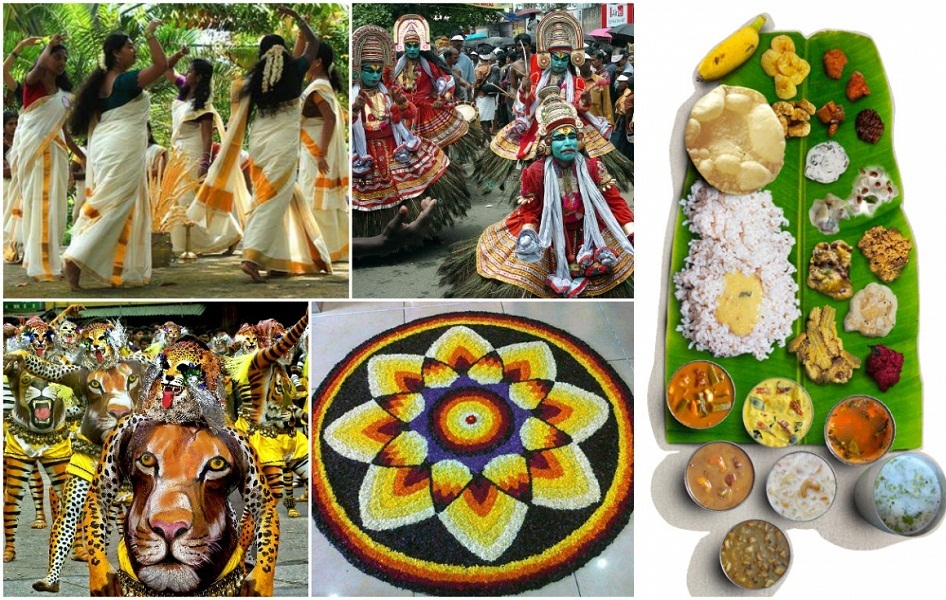
Onam is the biggest and the most important festival of Kerala and is celebrated by the Malayalis all over India and the world. The festival falls during the Malayalam month of Chingam (Aug – Sep) and marks the commemoration of home-coming of the mythical King Mahabali. It is a harvest festival and is celebrated with joy and enthusiasm all over the state by people of all communities. Thousands of domestic and foreign tourists visit Kerala to be a part of Onam.
The festival of Onam lasts from four to ten days. Each day has its own importance in various rituals and traditions. First day, Atham and tenth day, Thiruonam are the most important of all. People wear new clothes to mark the festival and visit temples to offer their prayers to God. During Onam, people create a multi-colored floral decoration on the ground in front of their houses called ‘Pookolam’ and also prepare Onasadya, an elaborate meal with many mouthwatering delicacies. Events such as Vallamkali (snake boat race), Kaikottikali, Kathakali dance, and Pulikali procession are held during Onam. Thrissur, Tripunithura, Aranmula, Kovalam, Trivandrum are the top places to visit for Onam in Kerala to witness the breathtaking celebrations.
Kumbh Mela
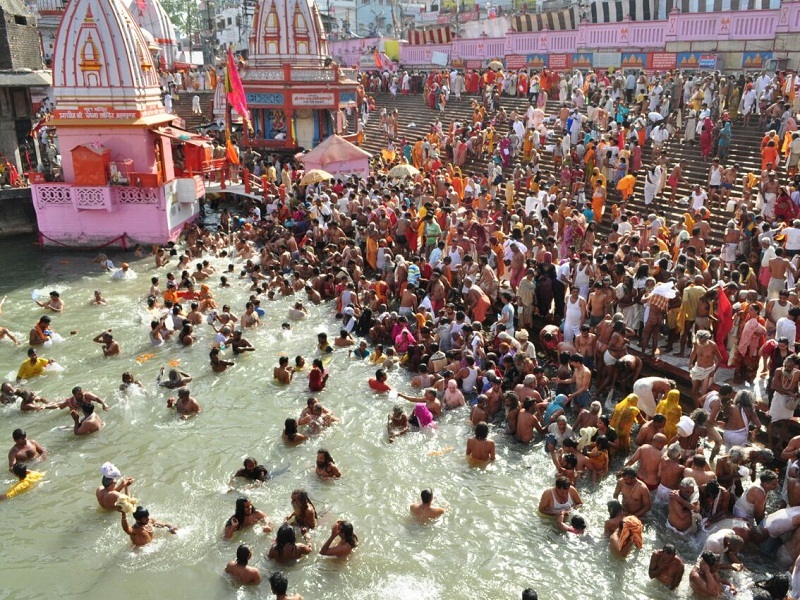
Kumbh or Kumbh Mela is one of the biggest pilgrimage events / festivals of India. It begins and ends on Makar Sankranti and Maha Shivratri respectively. Kumbh Mela is a Hindu pilgrimage that takes place four times every twelve years and is celebrated at four locations, i.e. at Allahabad (Prayag), Haridwar, Ujjain and Nashik. After every twelve-year, Maha Kumbh Mela is held at Prayag, which is attended by millions of people, making it the largest gathering anywhere in the world.
The festival is held in one particular location or venue every 12 years. The time and place where the festival is held is based on astrological and religious observations. The festival takes places on the banks of many rivers on a rotational basis. Kumbh Mela is attended by millions of people on a single day. The major event of this festival is a ritualistic bath at the banks of the rivers in each town. Kumbh Mela is the most sacred of all the pilgrimages. Thousands of holy men and women (monks, saints and sadhus) attend this religious congregation.
Hornbill Festival
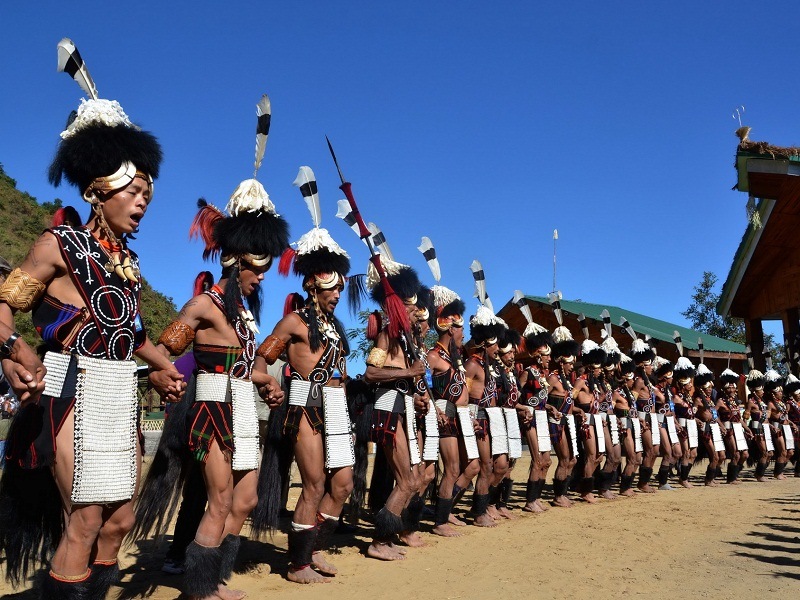
The Hornbill Festival is the most popular festival of Nagaland and also one of the most thronged festivals of India. The festival takes place from 1st December, which happens to be the Nagaland Formation Day, till the 10th of December at Naga Heritage Village, Kisama which is about 12 km from Kohima. Organised by the State Tourism and Arts & Culture departments, the festival aims to revive and protect the rich culture of Nagaland and showcase its ethnic customs and traditions to the world. Also known as ‘Festival of Festivals’, the festival is named after the great Indian hornbill.
All the tribes of Nagaland take part in this festival. The Hornbill Festival highlights comprise of the Traditional Naga Morungs Exhibition and sale of Arts and Crafts, Cultural Medley – songs and dances, Traditional Archery, Indigenous Games, Naga wrestling, Herbal Medicine Stalls, Food Stalls, Flower shows and sales, Beauty Contest, Fashion shows and Musical concert. Traditional arts are also displayed with paintings, sculptures and wood carvings by contemporary Naga artists are on display. The evening music concerts ensure that the festive spirit carries on throughout the night. One of the major highlights of this festival is the Hornbill International Rock Festival that is held at Indira Gandhi Stadium. Bands from all across the country come to compete in the concert.
Puri Rath Yatra
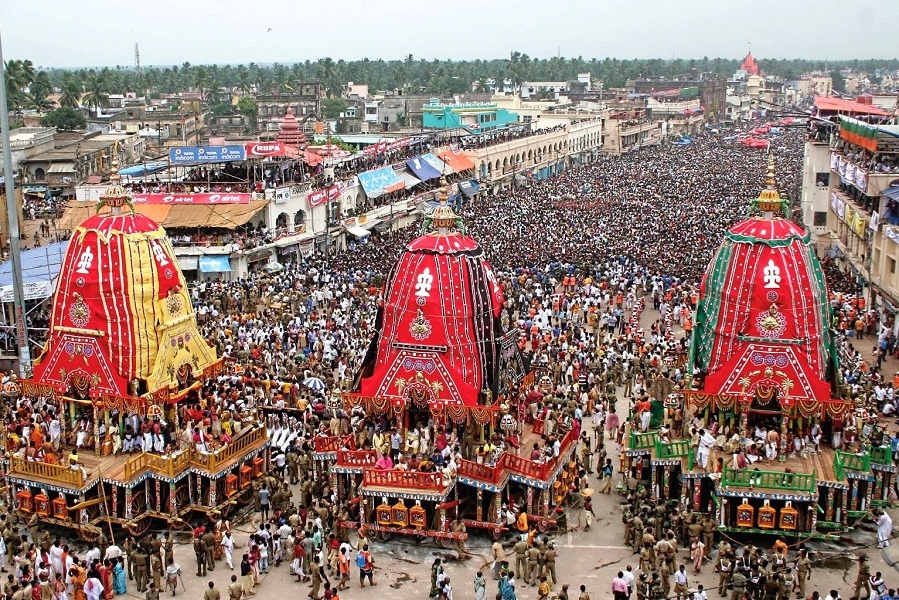
The Jagannath Yatra or Rath Yatra is one of the most popular festivals of India. The Rath Yatra marks the annual visit of Lord Jagannath to his birthplace along with his brother Balarama and sister Subhadra. It is celebrated on the second day of the Shukla Paksha Ashadha month as per traditional Oriya Calendar. This world famous chariot festival celebrated for 8 days is held at Sri Jagannath Temple at Puri (Orissa). Thousands of devotees flock to Puri during the occasion.
As part of Ratha Yatra, the wooden idols of Krishna, Balarama and Subhadra are taken out for procession in three chariots to Gundicha Temple and remain there for a week. Then the deities or Ratha Yatra return to the Main temple. The return journey of Puri Jagannath Ratha Jatra is known as Bahuda Jatra. The three chariots are pulled by strings. The Ratha Yatra attracts approximately 17 lakh visitors to the town of Puri. The chariot of Lord Jagannath which is 45.6 feet high comprises 18 wheels and is referred as Nandighosa. This Yatra is touted as the festival of unity.
Maha Shivratri
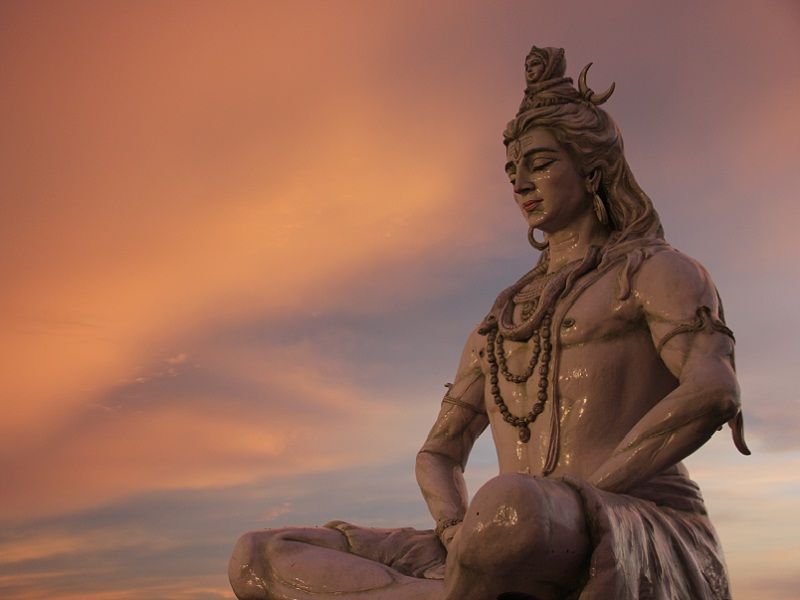
Maha Shivratri is one of the popular Hindu festivals of India and devoted to Lord Shiva. It is celebrated every year on the 13th night / 14th day of the month of Palgun (February to March). It is believed that on this day Lord Shiva got married to Goddess Parvati. It also marks the night when Lord Shiva performed Tandava, the dance of primordial creation, preservation and destruction. The entire ceremony chiefly takes place during the night.
Maha Shivratri is celebrated all over the country with great enthusiasm. Maha Shivratri is the day to rejoice and pray to the almighty for wellness. On this day, Hindu people offer prayers to the Lord Shiva and also observe fasting (vrata) throughout the day. One can see huge crowd of devotees outside the Shiva temples where they come for early morning prayers. The prayers continue throughout the night of Maha Shivratri and devotees offer coconut, Bilva leaves, and fruits. As this is a dark fortnight, devotees light and diyas throughout the night. This is signified as a symbol of spiritual manifestation. Somnath, Srisailam, Mahakaleshwar, Omkareshwar, Kedarnath, Bhimashankar, Kashi Vishwanath, Trimbakeshwar, Vaijyanath, Nageshvara, Rameshwaram and Grishneshwar are the prime places to celebrate Shivratri with great devotion.
